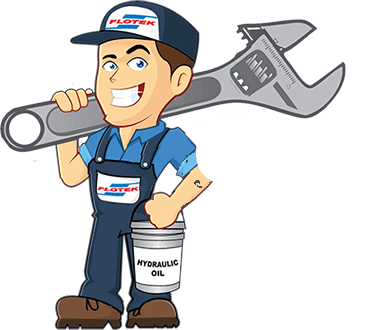Keeping It Clean: 8 Ways to reduce Hydraulic Fluid Contamination

Hydraulic systems play a crucial role in various industries, powering heavy machinery and fixed plant equipment in production plants.
Australia is driven by hydraulics. All hydraulic systems feature high-precision components, which are vulnerable to the smallest amounts of contamination. Even microscopic metallic particles that make their way between close-fitting reciprocating surfaces can very quickly bring even the most powerful hydraulic systems to their knees.
To ensure optimal performance and longevity, it’s essential to maintain clean hydraulic fluid.
Contamination can lead to:
Machinery failures
Lost production hours and more manpower
Unnecessary costly repairs
Below are some practical tips to help you reduce hydraulic fluid contamination and keep your systems running smoothly.
Regular Fluid Analysis – take regular fluid samples:
Implement a proactive approach by conducting regular fluid analysis. This involves taking samples of the hydraulic fluid and analyzing them for contaminants. By monitoring the fluid's condition, you can detect early signs of contamination and take appropriate action before it causes significant damage. This preventive measure can save you time, money, and potential system downtime.
Use the right filters and then replace these regularly:
Invest in high-quality filtration systems to remove contaminants from the hydraulic fluid. The filtration system should be designed to capture particles of various sizes, including dirt, debris, and metal shavings. Regularly inspect and clean or replace filters as recommended by the manufacturer to maintain their effectiveness. Remember, a well-maintained filtration system is your first line of defense against contamination.
Change hydraulic fluid according to prescribed schedule
Routine maintenance is by far the best way to ensure your hydraulic fluid stays clean and contamination-free. Hydraulic fluid is a wear item and requires regular replacement. This involves completely draining and flushing the hydraulic system and replacing the old, oxidised oil with fresh clean oil. Doing this on a regular basis, before contamination levels rise, will reduce the amount of debris buildup within the system
Use the correct fluid and filter it before replenishing the system
Different fluids offer different wear protection and chemical stability properties that make them more, or less suitable for different applications. Even new hydraulic fluid is sometimes not 100% free of contaminants. To make doubly sure of the cleanliness of your fluid, you may consider filtering the replacement hydraulic fluid through a very fine - 10 micron filter.
Proper Fluid Handling:
Adopt best practices for handling hydraulic fluid to minimize the risk of contamination. Use clean containers and equipment when transferring or storing fluid. Avoid exposing the fluid to open air for extended periods, as it can attract moisture and airborne particles. Ensure that all connections and fittings are clean and properly sealed to prevent any potential entry points for contaminants.
Clean Environment:
Maintain a clean and controlled environment around your hydraulic systems. Minimize the presence of dust, dirt, and other potential contaminants by regularly cleaning the surrounding area. Implement proper sealing measures to prevent external elements from entering the system. Additionally, consider installing breathers and desiccant breathers to control moisture and airborne particles.
Educate and Train Personnel:
Properly educate and train your personnel on the importance of maintaining clean hydraulic fluid. Teach them about the potential sources of contamination and how to handle the fluid correctly. Encourage a culture of cleanliness and accountability within your organization, emphasizing the impact of contamination on system performance and overall productivity.
Regular System Maintenance:
Implement a comprehensive maintenance schedule for your hydraulic systems. This includes regular inspections, fluid changes, and component checks. By adhering to a maintenance routine, you can identify and address any potential issues before they escalate and cause contamination. Regular maintenance also helps.
Flotek are the Hydraulic System experts - it’s our day job!
If your production hasn’t been operating at its best, and you suspect it may be due to contaminated hydraulic fluid, we can help. Call 9397 0044. We can have one of our Technicians to your site within 24 hours anywhere in greater Melbourne to do a fluid sample and analysis; potentially saving your business thousands of dollars in production downtime.
Our mission is to keep your production going – it’s all about More Up-Time.




